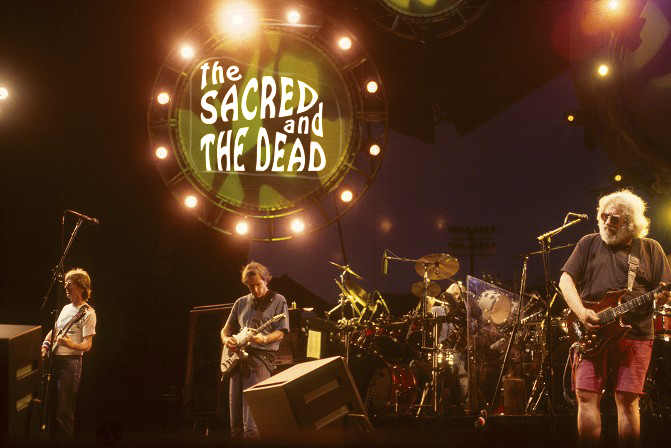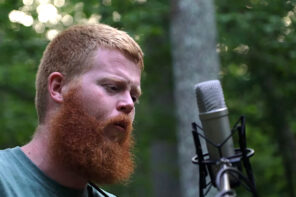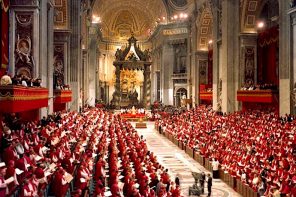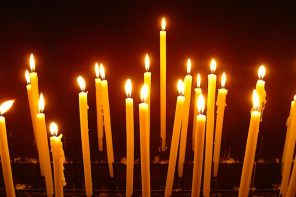Jerry Garcia said once that he didn’t care much for the Western God—but that didn’t stop him from creating a religion of his own, complete with “tie dye, skulls, and swirling skirts.”
But just how does the Grateful Dead do “the work of the sacred” for its followers?
In the series below, inspired in conversation with Varun Soni of USC’s Office of Religious Life, RD editor Cathleen Falsani has collected a set of reminiscences—intimate, philosophical, devotional—that engage this question.
Deadhead or civilian, believer or skeptic, we hope you’ll join us as we mark the conclusion of this singular American pilgrimage.
________
#1 : It’s (Not) Just a Box of Rain
by Cathleen Falsani
Inside the sound, swaying and dancing and spinning with abandon, many of the Dead’s fans discovered something more transcendent than a blissed-out, good time. They found belonging.
#2 : “Friend of the Devil” is a Love Song
by Pitman B. Potter
When the song’s narrator hopes he can “get some sleep tonight,” we are there too, hoping and praying for this broken, tired, alienated friend to find some rest.
#3 : The Trouble With Sugar Magnolia
by Kaya Oakes
That was their ritual, these Deadheads. Play “Sugar Magnolia” and they’d all start spinning. And we’d look at them and laugh.
#4 : Operator, Can You Help Me
by Maren Haynes
Lately I’ve noticed that many of the people I’ve known best face-to-face seem awfully hard to find. Our connection, once burning with possibility and joy, began to cool, as cell phone calls dwindled and numbers eventually changed or were disconnected. As our shared realities drifted apart in their likeness, like Pigpen, I also turned to technologies that promised connection to try to tamp down the yearning and temper that sense of loss.
#5 : Three Ways to American Beauty
by Aaron K. Kerr
At the height of secular modernity, when Catholics were opening the windows of Vatican II and American theologians were delving into what was known as the gospel of Christian Atheism, a California dance band re-named themselves, and the Warlocks became the Grateful Dead.
#6 : “Ripple” is a Spiritual Manifesto
by Jim Burklo
The Dead sang, plucked, and pounded inexorably onward toward a palpably approaching ecstasy with no knowable when, where, or how…
#7 : I Love You More Than Words Can Tell
by David Vanderveen
It takes humility to admit that we don’t have the answers, that our models aren’t truth itself and that the palaces we build to the religions we’re born into are failed, broken and must be burned.
#8 : Deadheads Are Not a Deviant Subculture
by Deborah J. Baiano Berman
A Dead show offers authenticity in moments of collective enthusiasm, shared pleasure. And sharing the music is not merely sharing a “thing”—it is a sharing of the very fact of sharing.
#9 : How an Iranian-Jewish Angeleno Discovered Her Tribe
by Saba Soomekh
In many ways, Robert Hunter’s lyrics remind me of the Persian poets my father would recite to me—poets such as Rumi, Sadi, and Hafiz, whose mystical sonnets (ghazel) express the inexpressible through metaphors such as dreams, nightingales, and flowers that embody the pain of separation from the beloved, and longing for a reunion.
#10: “Truckin'” as New American Pilgrimage
by Varun Soni
“Truckin’’” is not just the narrative of an American band on the road, but it is also an aspiration for a uniquely American adventure where the road trip is a pilgrimage and the real journey is one of self-discovery.
_____________
Special thanks to Nicholas Meriwether at the Grateful Dead Archive at UC Santa Cruz as well as to photographers Herb Greene and Susana Millman for graciously allowing us access to their work.





